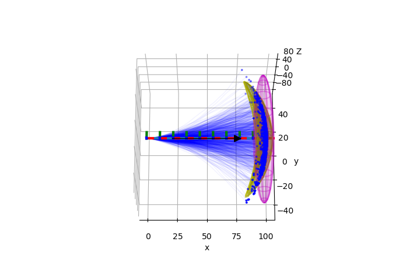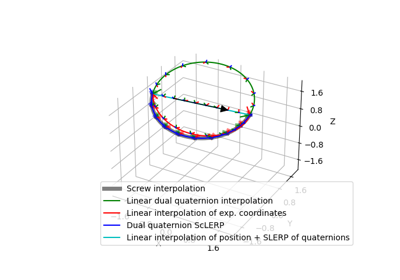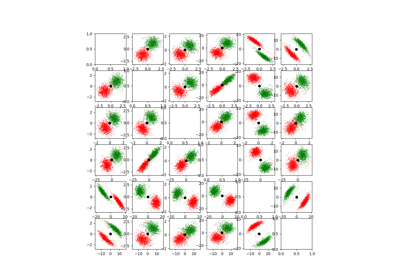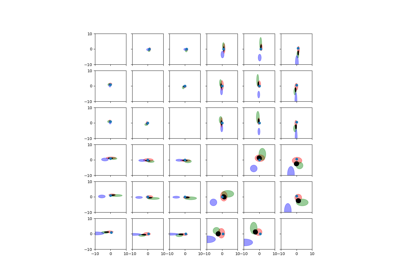pytransform3d.transformations.exponential_coordinates_from_transform#
- pytransform3d.transformations.exponential_coordinates_from_transform(A2B, strict_check=True, check=True)[source]#
Compute exponential coordinates from transformation matrix.
Logarithmic map.
\[Log: \boldsymbol{T} \in SE(3) \rightarrow \mathcal{S} \theta \in \mathbb{R}^6\]\[\begin{split}Log(\boldsymbol{T}) = Log\left( \begin{array}{cc} \boldsymbol{R} & \boldsymbol{p}\\ \boldsymbol{0} & 1 \end{array} \right) = \left( \begin{array}{c} Log(\boldsymbol{R})\\ \boldsymbol{J}^{-1}(\theta) \boldsymbol{p} \end{array} \right) = \left( \begin{array}{c} \hat{\boldsymbol{\omega}}\\ \boldsymbol{v} \end{array} \right) \theta = \mathcal{S}\theta,\end{split}\]where \(\boldsymbol{J}^{-1}(\theta)\) is the inverse left Jacobian of \(SO(3)\) (see
left_jacobian_SO3_inv()).- Parameters:
- A2Barray-like, shape (4, 4)
Transformation matrix from frame A to frame B
- strict_checkbool, optional (default: True)
Raise a ValueError if the transformation matrix is not numerically close enough to a real transformation matrix. Otherwise we print a warning.
- checkbool, optional (default: True)
Check if transformation matrix is valid
- Returns:
- Sthetaarray, shape (6,)
Exponential coordinates of transformation: S * theta = (omega_1, omega_2, omega_3, v_1, v_2, v_3) * theta, where S is the screw axis, the first 3 components are related to rotation and the last 3 components are related to translation. Theta is the rotation angle and h * theta the translation.





